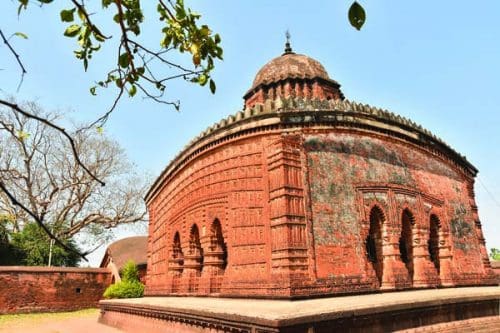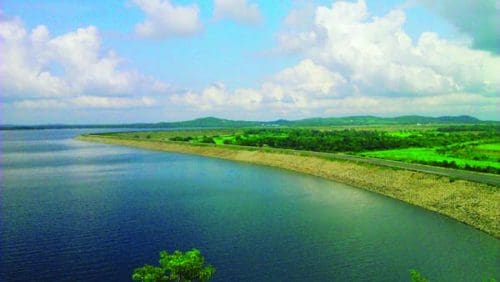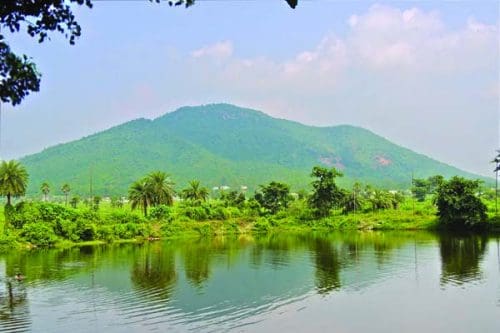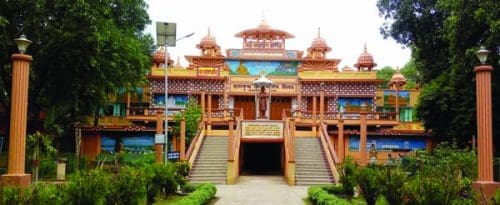
Bankura beckons with some incredibly picturesque destinations and a glorious heritage. Here are 4 unexplored places to visit in Bankura in West Bengal
Bankura, which forms a part of the eastern Chhota Nagpur plateau, looks like a region that has been touched by Nature herself, and this is pretty much evident in the ancient brown hills dotting the landscape and the abundance of gurgling rivers and streams.
Moreover, the ancient temples and monuments that Bankura houses make it a repository of rich culture and tradition. It is for these reasons that Bankura has gained wide popularity as a tourist destination.
A wide range of places to visit, from the cultural and architectural perspective, terracotta temples, dense virgin forests and some amazing scenery at Mukutmoipur, etc. attract visitors the year round. The panoramic landscape instills a sense of nostalgia, a yearning to drift back into a time long past.
We recommend visitors going on a culture-rich adventure, these 4 unexplored places to visit in Bankura in West Bengal.
Bishnupur
The paradise for terracotta crafts and a flourishing temple town, Bishnupur is one of the unexplored places to visit in Bankura in West Bengal
Bishnupur remains a tourist favourite as well as a matter of pride for the locals. Besides being the origin of “Baluchari” masterpieces and the renowned music of Seni Gharana, Bishnupur was also the capital of the 7th century Mallabhum kingdom.
The fame and glory of the kingdom rose to its peak under the rule of Bir Hambir, the 49th ruler of Mallabhum. Its rich, glorious past is reflected in its art and architecture, and music and handicrafts, such as pottery and weaving.
Besides showcasing a unique form of architecture, Bishnupur prides itself on its brilliant and detailed terracotta work, which has not lost its charm over the course of time. A visit to the various temples in Bishnupur lets us into the exquisite craftsmanship of its artisans and re-enforces its attraction as one of the unexplored places to visit in Bankura in West Bengal.

Mukutmanipur
The Mukutmanipur–Jhilimili circuit has over the years, has become a favourite with tourists and is one of the unexplored places to visit in Bankura in West Bengal. The second biggest earthen dam in India, Mukutmanipur is just a two-hour drive from Bankura and is located at the confluence of the Rivers Kangsabati and Kumari.
This enormous tract of water is surrounded by lush green forests and hillocks. The undulating terrain along the southern edge of the Kangsabati Water Reservoir extends as a three-dimensional green, terracotta necklace.
The azure waters of the reservoir, stall and placid, could fool you into believing that the sky is immersed within. By night, the vast blue plate transforms into a shimmery silver sheet.

Susunia Hill
Susunia Hill, located just 20km from Bankura, is a popular trekking destination and is one of the unexplored places to visit in Bankura in West Bengal.
However, this place is also frequented by visitors who especially come to see the Susunia Dhara, a natural spring, as well as the Chandavaran inscriptions. Excavations carried out in this area reveal these inscriptions dating back to the 4th century AD.
Trees such as shal, segun, palash, amlaki etc, contribute to the floral treasure here. Autumn sees the entire hill appear as if it is on fire because of the red Palash blooms which cover it entirely.

Nara Narayan Temple, Joyrambati
Nara Narayan temple in Joyraqmbati is is one of the unexplored places to visit in Bankura in West Bengal.
Practical Vedanta was taught to the masses in a simplified manner by the patriot monk of India, Swami Vivekananda, who said that “Service to man is service to God.”
In pursuance of this concept, Swami Nityananda, Founder Secretary of the Ramakrishna Vivekananda Mission, Barrackpore, constructed a temple called Nara Narayan Temple, in the village of Joyrambati, in Bankura district. This temple witnesses a unique method of worship.
Every day, a male child, aged between four to five years, irrespective of his caste or religion, is worshipped as a deity in the temple. He is offered flowers, fruits, garments, etc.
This kind of worship is said to be the practical fulfillment of the ideal of practical Vedanta, with the core message being that civilization will reach its zenith when we respect each other as we respect God.
Read More: Discover your India



